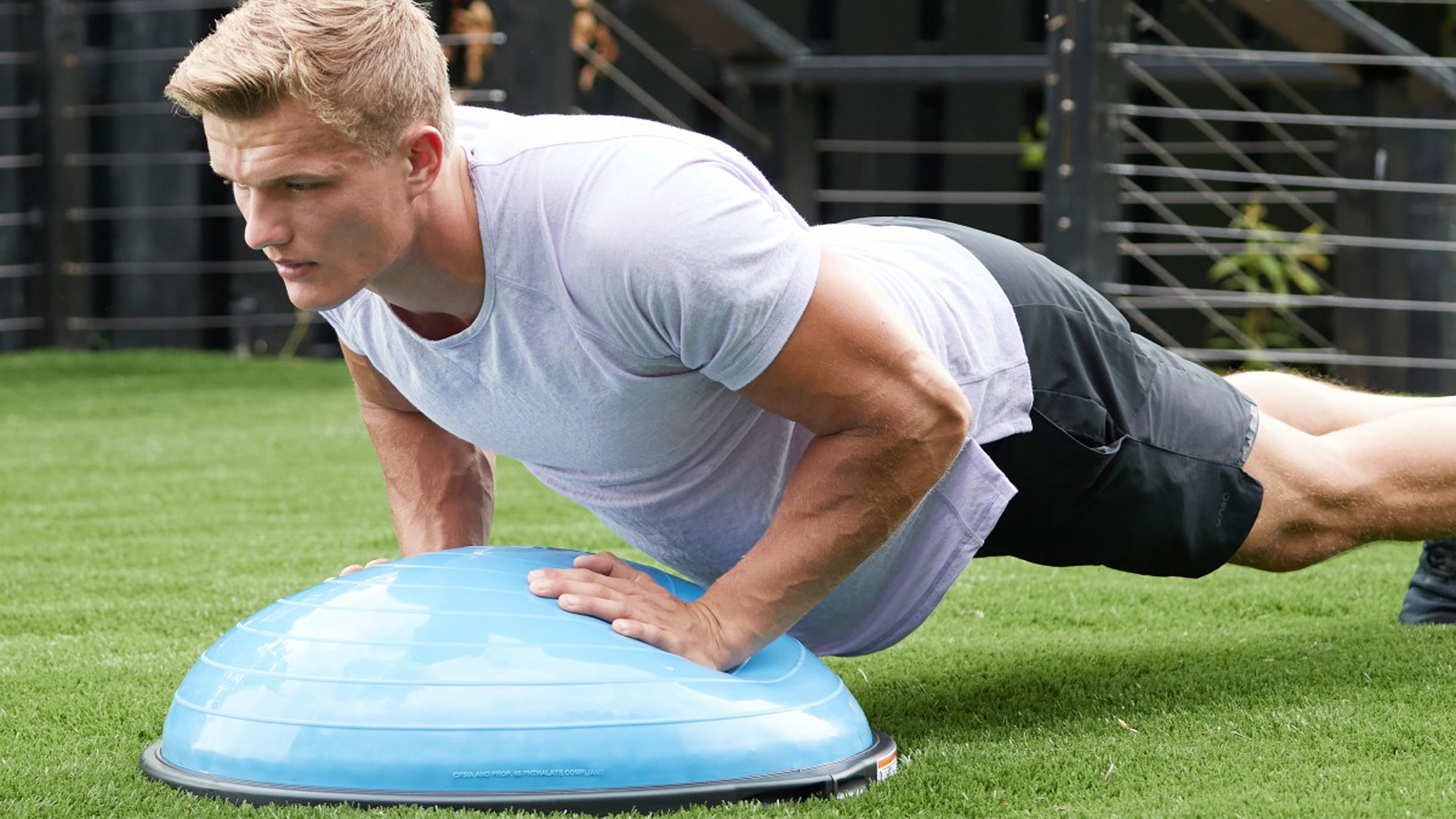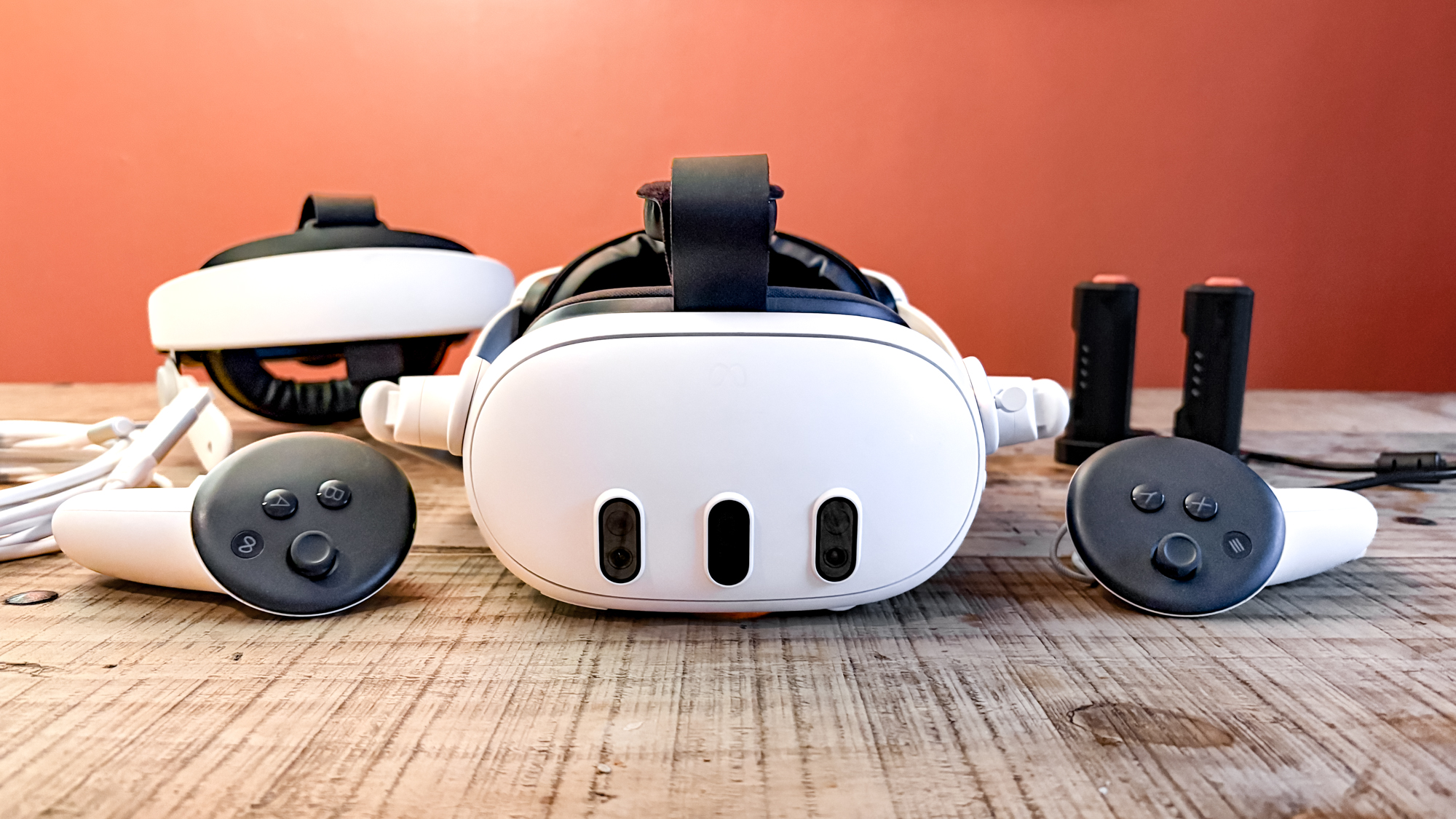
If you want to step up your Pilates game, this Pilates for beginners workout strengthens muscles using just one Bosu ball.
Known as a balance trainer, a Bosu ball challenges balance, core stability, coordination and strength with its unstable workout surface. It regularly crops up in functional training, but we’re pumped to see it used during Pilates workouts, proving you don’t need the best adjustable dumbbells to work your core muscles hard and build functional strength.
You can find a Bosu in most gym set-ups, and if you practice Pilates regularly, you could add some ankle weights to increase the intensity. Either way, expect that typical Pilates burn in just 20 minutes. Read on to see how Bosu ball Pilates could be a core torcher.

Exercising with a bosu ball recruits the smaller stabilizer muscles alongside your major muscle groups like your glutes or back, which could help you develop strength and improve posture. Combine that with low-impact Pilates, which research has shown can improve muscular endurance, flexibility, posture and balance, and it’s a fitness power duo to be reckoned with.
Pilates uses high reps and controlled movements to achieve time under tension (TUT) and increase volume, meaning your muscles work for longer overall. It’s one of the 5 best ways to build muscle without lifting heavier weights.
Pilates BOSU workout | 20-minute Pilates for beginners
Balance training improves the communication between your nervous system and muscles, which means you could improve coordination and speed if you practice on a Bosu ball regularly. But even if you adopt this workout as a one-off, you can still expect a deceivingly tough 20 minutes.
Most of the Bosu workout is performed while seated or lying down (what’s not to love?), but if you have any lower back injuries, we recommend checking with a qualified medical professional before engaging in new exercise regimes and workouts.
Get instant access to breaking news, the hottest reviews, great deals and helpful tips.
Like any Pilates ab workout, you’ll need to control your breathing as Pilates focuses on connecting breath, mind and movement. Diaphragmatic breathing is an expansive breathing technique, and if you’re unsure whether you’re doing it correctly, Chris Hemsworth’s 5-minute breathing exercise is a solid introduction for beginners.
During seated exercises, imagine a piece of string extending from the top of your head and pulling you upward. A tall spine and flat back encourage good posture and core activation — two Pilates fundamentals — and will engage the correct muscles, including your abs.
The hundred is a popular Pilates staple that involves creating the hollow hold position with your body, extending both arms in front of you, then pulsing up and down with your arms, you guessed it — one hundred times. It will set your abs on fire, but people tend to hold their breath during this particular exercise. Keep your breathing measured and squeeze your shoulder blades together while tilting your pelvis toward your spine.

Your gluteus medius (outer glutes) muscles get some much-deserved attention during the lateral leg lifts and pulses. Many people focus on the gluteus maximus when designing leg day programs, which are active during exercises like deadlifts or squats. But your outer glutes are responsible for rotating and abducting the leg and should be equally as strong.
That’s why we love Pilates. The practice gives as much love to your smaller, deeper muscles as the powerhouse muscle groups. If you’re not convinced, this standing Pilates workout sculpts strong muscle in 30 minutes and achieves it brilliantly.
But although there are endless benefits, Pilates for weight loss is a more complicated process. If you want to lose fat, finding out how to calculate your body fat percentage is a step in the right direction, but also consider monitoring stress and learning more about your hormones.
More from Tom's Guide
- High reps vs heavy weights: which is better for building muscle?
- Try this at-home Pilates workout with weights to build strength all over
- These are the best ab workouts to increase core strength

Sam Hopes is a level 3 qualified trainer, a level 2 Reiki practitioner and fitness editor at Tom's Guide. She is also currently undertaking her Yoga For Athletes training course.
Sam has written for various fitness brands and websites over the years and has experience across brands at Future, such as Live Science, Fit&Well, Coach, and T3.
Having coached at fitness studios like F45 and Virgin Active and personal trained, Sam now primarily teaches outdoor bootcamps, bodyweight, calisthenics and kettlebells.
She also coaches mobility and flexibility classes several times a week and believes that true strength comes from a holistic approach to training your body.
Sam has completed two mixed doubles Hyrox competitions in London and the Netherlands and finished her first doubles attempt in 1:11.

